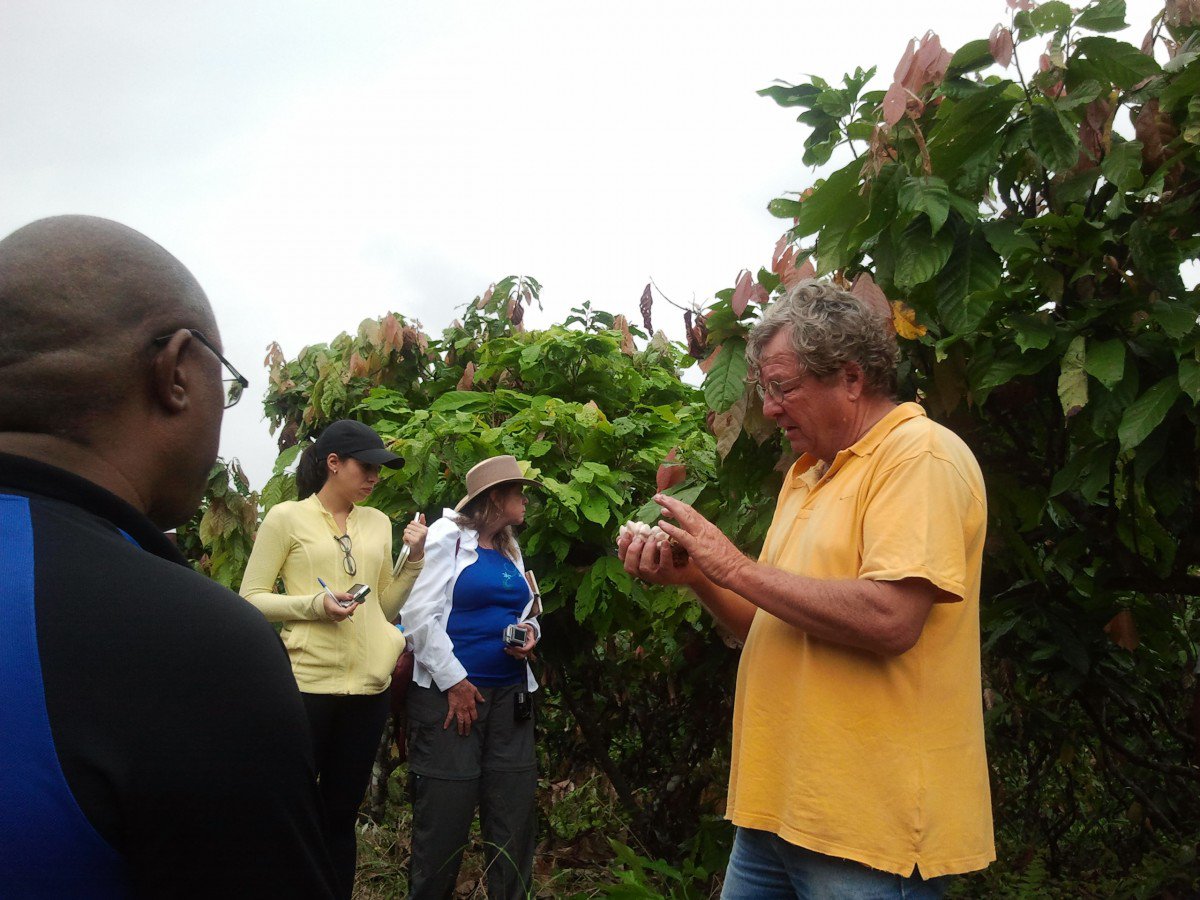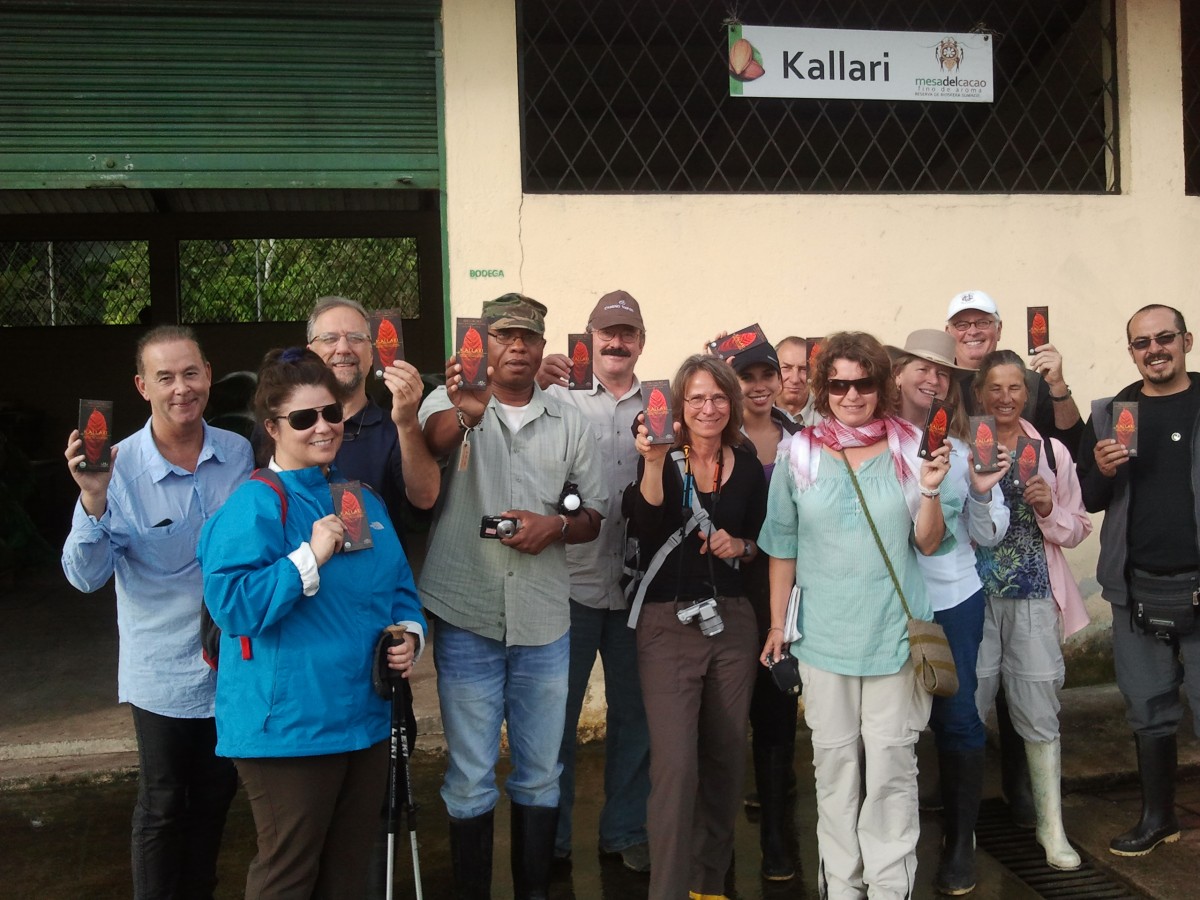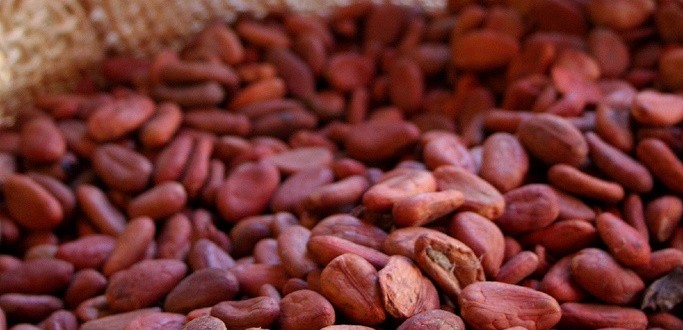An eight-seater van rumbled along the lightly graded road from Quito to Quevedo. Our group of chocolatiers and chocolate makers from the United States, Brazil, Belgium, and Canada was on its way to Quevedo, one of Ecuador’s leading agricultural centers, to learn more about the country’s cacao, an increasingly rare commodity. Along the way, I was struck by the contrasts: spectacularly beautiful countryside alongside abject poverty. We passed lacy waterfalls plunging down steep mountain sides next to half built cinder block shanties where TVs flickered behind empty doors and windows.

The Heirloom Cacao Preservation (HCP) Initiative traveled to Ecuador to seek out and preserve heirloom cacao that is currently being destroyed in the country.
The Heirloom Cacao Preservation Initiative
Before anyone spent time tasting and savoring unique varietals of single origin chocolate as they would fine wines, most people had one frame of reference for unsweetened chocolate—the bitter brick of baking chocolate our mothers used in recipes, which on its own tasted terrible. Over the past fifteen years, this has changed dramatically. In recent months, the rising demand for chocolate—the demand for cacao is expected to grow by 30 percent by 2020—has gained international notice. But for many in the fine chocolate industry, the loss of cacao biodiversity, especially the loss of older traditional and fine flavor cacao varieties, is more alarming than cacao scarcity. Chocolate is poised to go the way of conventional tomatoes and strawberries; it may look the same on the outside, but inside, the flavor and character has disappeared. Over the last 20 years, breeding programs focused on disease resistance and yield have not just supplemented the traditional cacao orchards, but have also replaced them. In countries like Ecuador, this has led to the loss of hundreds of acres of flavorful cacao.
As early as 2010, Santiago Peralta, President of Pacari Chocolate in Ecuador and member of the Fine Chocolate Industry Association (FCIA), lamented the loss of old cacao orchards. He was actively searching for fine flavor cacao and when he finally located heirloom groves they were ripping out the trees to plant a more productive—and thus profitable—variety. Those kinds of stories led Dr. Lyndel Meinhardt, research leader for the Sustainable Perennial Crops Laboratory at USDA Agricultural Research Service, to suggest that the FCIA work to save fine flavor cacao by matching flavors (determined by actual human tastebuds) to genetics.

For many in the fine chocolate industry, the loss of cacao biodiversity, especially the loss of older traditional and fine flavor cacao varieties, is more alarming than cacao scarcity.
While a significant amount of scientific research has focused on disease resistance and improved yield; flavor is a very complex trait and therefore not normally considered. Fortunately, in 2011 the FCIA created the Heirloom Cacao Preservation (HCP) Initiative in partnership with the USDA ARS. Dr. Meinhardt shared at the FCIA meeting in June 2014, “The HCP is important in preserving the diversity of cocoa flavor. For the first time, we can understand and identify tree varieties that are really unique in flavor. It allows us to take information to the next level where we can analyze it to tease out what contributes to flavor. This is all being done at the USDA Agricultural Research Service laboratory in Beltsville, Maryland, with research geneticist Dr. Dapeng Zhang, one of the world’s leading experts in cacao genetic diversity.”
Exploring & Savoring The Fine Flavors of Ecuadorian Cacao
Ask any serious chocolate maker or chocolate connoisseur to name their favorite cacao from anywhere in the world, and invariably they will extol the virtues of Ecuadorian chocolate. Partly due to the flavors that emerge from the rich soil and unique climate there, and also due to the deep heritage and cultivation practices of families who have been nurturing their cacao with traditional methods for over a century.
It is sad to see this precious cacao disappearing and the encroachment of high yielding bulk cacao is seemingly everywhere. Along the highway as we come into the agricultural Los Rios province, we start to see vast orchards: banana, oil palm, passion fruit, coffee bean, and cacao. Most of the cacao orchards along the highway are growing bulk cacao, mostly CCN51, a hybrid variety developed for its high yield and large pods. While some growers have tweaked the post-harvest processes to improve the flavor, CCN51 has a bland taste spectrum and requires high amounts of fertilizer to maintain yields.

Members of the Heirloom Cacao Preservation (HCP) Initiative work to save centuries-old cacao varieties.
Undeterred, we continue our hunt for authentic, indigenous flavors, stopping at Hacienda Limon owned by Samuel Von Rutte whose trees have since received the Heirloom Cacao designation from the HCP because of their fine flavor. Samuel has lived and worked in the Ecuadorian chocolate industry for over 25 years and is now out on his own. While Samuel’s trees are technically hybrids, they contain a percentage of the old Ecuadorian Nacional cacao blood line. While the resulting flavor is different from a traditional Nacional, it is fabulous.
The trees in his orchards are well managed, pruned to a workable height for harvest and to optimize sun exposure, and he has developed a pre-fermentation drying process that he feels improves not only the fermentation process itself but the flavor of his cacao beans. Samuel’s commitment to his practices is clear: “Cocoa flavor is not something that just exists, it is something that is influenced every day, all year long by everything from genetics, farming practices, and post-harvest practices, to roasting and refining. Each step is important–you must do the right things the right way.”
“Cocoa flavor is not something that just exists, it is something that is influenced every day, all year long by everything from genetics, farming practices, and post-harvest practices, to roasting and refining. Each step is important – you must do the right things the right way.” – Samuel Von Rutte, Hacienda Limon, Ecuador
Defending the Future of Chocolate
The loss of flavor and cacao bio-diversity became the underlying lesson we learned throughout our travels across Ecuador. After visiting three other orchards in Los Rios, our next stop was Mindo where Americans Jose Meza and Barbara Wilson of Mindo Chocolate Makers have established a chocolate making operation to support local cacao farmers in Jose’s home region of Pichincha. They search out traditional cacao orchards and pay the farmers a premium directly for their beans, by-passing the middlemen and collection centers. They have also brought in cacao experts to help improve the post-harvest processes so that the beans are allowed to reach their full flavor potential. Barbara has begun to see the impact of valuing high quality, flavorful beans and how this changes the farmers’ perspective. “There has been a big transformation in the way that cocoa farmers think about their beans. They are proud of their Nacional beans and want to sell a high-quality product. When we first started making chocolate, farmers were not rewarded in any way for higher quality, and would sell any variety of beans all mixed together in one bag. When we asked them to separate out only the highest quality beans, they began to understand the importance of the quality of their beans for the reputation and demand for Ecuadorian cacao.”

Farmers are ready and willing to improve their husbandry practices in support of higher-quality cacao.
Farmers are ready and willing to improve their husbandry practices to continue growing the cacao that their families have always grown (instead of tearing them out like so many others and planting higher production hybrids or other crops) if it’s economically realistic for them to do so. They understand and appreciate the quality of what they have. A premium price is what makes all the difference.
Throughout our travels in Ecuador, we saw firsthand how quickly a precious resource is disappearing. Though they may not realize it, consumers have enormous power to influence how the chocolate industry evolves and whether heirloom cacao survives. Those who appreciate taste, quality, and environmentally sustainable initiatives can make a difference by supporting members of the Fine Chocolate Industry Association, chocolate companies who are leading this effort to save heirloom cacao. Each bite of chocolate ultimately has an impact on a farmer somewhere in the world. The chocolate people choose to consume now will have an impact for generations to come. Help us save the good stuff.
Pam Williams
Pam Williams serves as the volunteer President of the Fine Chocolate Industry Association (FCIA) and is an Heirloom Cacao Preservation (HCP) Initiative Executive Committee member. The FCIA is the only organization focused 100% on supporting fine chocolate professionals. The association promotes the artistry and craftsmanship of the chocolate professional focused on producing superior products made from fine chocolate and natural ingredients.




